Genus Jatropha Higher classification Nettlespurge | ||
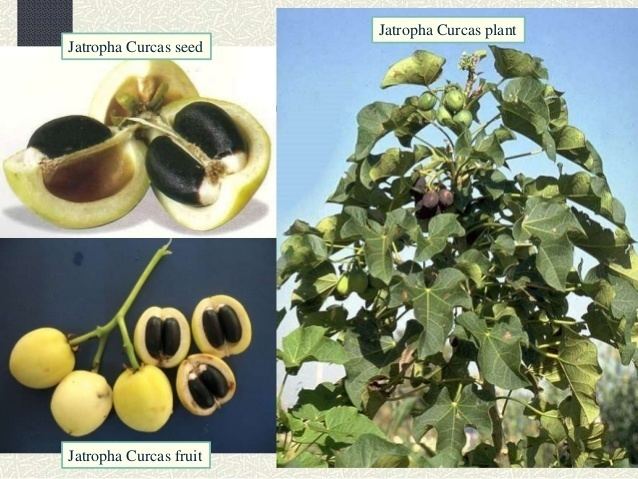 | ||
Similar | ||
How to plant jatropha curcas
Jatropha curcas is a species of flowering plant in the spurge family, Euphorbiaceae, that is native to the American tropics, most likely Mexico and Central America. It is cultivated in tropical and subtropical regions around the world, becoming naturalized in some areas. The specific epithet, "curcas", was first used by Portuguese doctor Garcia de Orta more than 400 years ago and is of uncertain origin. Common names include Barbados nut, purging nut, physic nut, or JCL (abbreviation of Jatropha curcas Linnaeus).
Contents
- How to plant jatropha curcas
- Jatropha curcas hope for future biodiesel production
- Botanical features
- Cultivation
- Propagation
- Processing
- Biofuel
- Jet fuel
- Carbon dioxide sequestration
- Use in developing world
- Burma
- Controversies
- Other uses
- References
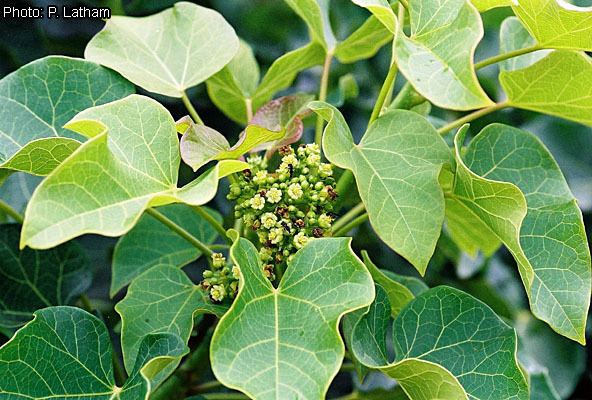
J. curcas is a poisonous, semi-evergreen shrub or small tree, reaching a height of 6 m (20 ft). It is resistant to a high degree of aridity, allowing it to be grown in deserts.
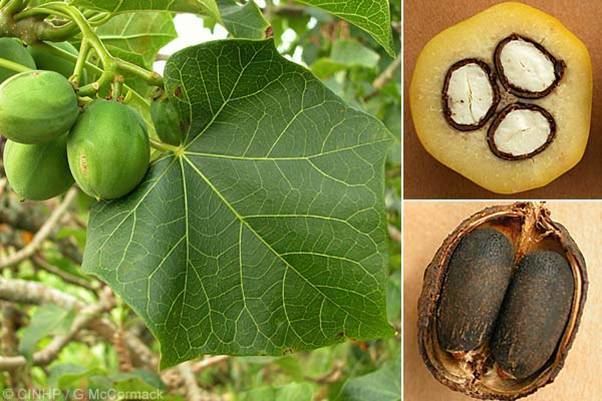
The seeds contain 27-40% oil (average: 34.4%) that can be processed to produce a high-quality biodiesel fuel, usable in a standard diesel engine. The Seeds are also a source of the highly poisonous toxalbumin curcin or jatrophin.
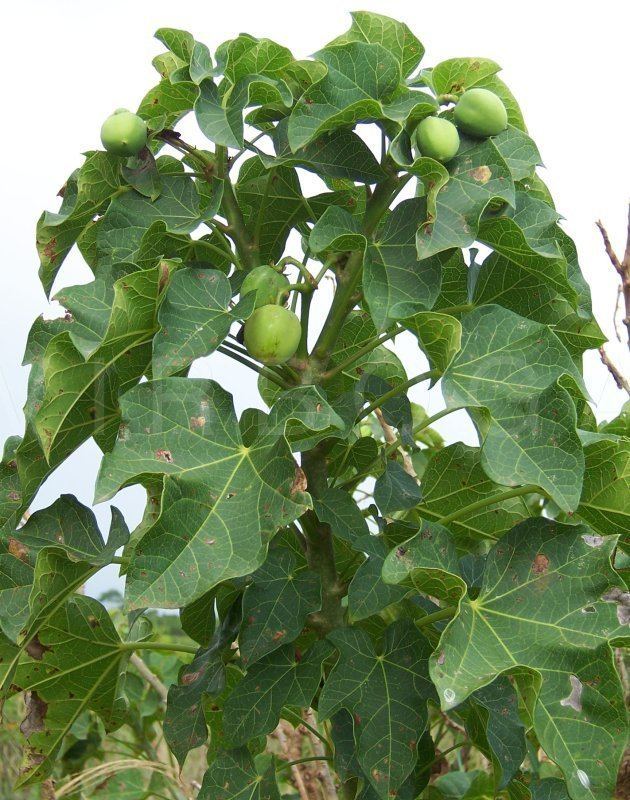
Jatropha curcas hope for future biodiesel production
Botanical features
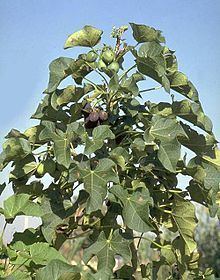
Cultivation
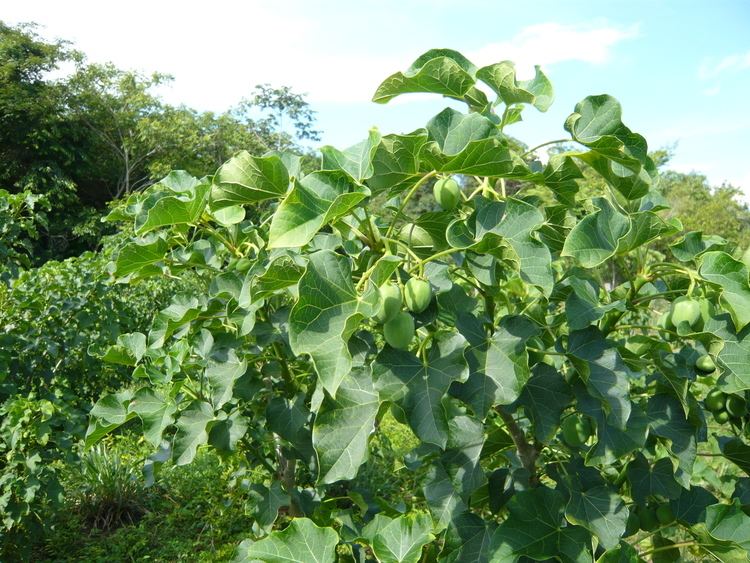
Cultivation is uncomplicated. Jatropha curcas grows in tropical and subtropical regions. The plant can grow in wastelands and grows on almost any terrain, even on gravelly, sandy and saline soils. It can thrive in poor and stony soils, although new research suggests that the plant's ability to adapt to these poor soils is not as extensive as had been previously stated. Complete germination is achieved within 9 days. Adding manure during the germination has negative effects during that phase, but is favorable if applied after germination is achieved. It can be propagated by cuttings, which yields faster results than multiplication by seeds.

The flowers only develop terminally (at the end of a stem), so a good ramification (plants presenting many branches) produces the greatest amount of fruits. The plants are self-compatible. Another productivity factor is the ratio between female and male flowers within an inflorescence, more female flowers mean more fruits. Jatropha curcas thrives on a mere 250 mm (10 in) of rain a year, and only during its first two years does it need to be watered in the closing days of the dry season. Ploughing and planting are not needed regularly, as this shrub has a life expectancy of approximately forty years. The use of pesticides is not necessary, due to the pesticidal and fungicidal properties of the plant. It is used in rural Bengal for dhobi itch (a common fungal infection of the skin).
While Jatropha curcas starts yielding from 9-12 months time, the best yields are obtained only after 2–3 years time. The seed production is around 3.5 tons per hectare (seed production ranges from about 0.4 t/ha in the first year to over 5 t/ha after 3 years). If planted in hedges, the reported productivity of Jatropha is from 0.8 to 1.0 kg of seed per meter of live fence.
Propagation
Jatropha curcas has limited natural vegetative propagation and is usually propagated by seed. Propagation through seed (sexual propagation) leads to a lot of genetic variability in terms of growth, biomass, seed yield and oil content. Low seed viability and the recalcitrant nature of oil seeds also limit seed propagation. However, clonal techniques can help in overcoming these problems that hinder mass propagation of this tree-borne oilseed species. Vegetative propagation has been achieved by stem cuttings, grafting, budding as well as by air layering techniques. The investigation leads to the recommendation that cuttings should be taken preferably from juvenile plants and treated with 200 micro gram per litre of IBA (rooting hormone) to ensure the highest level of rooting in stem cuttings. These vegetative methods have potential for commercial propagation of these plants.
Processing
Seed extraction is made simple with the use of the Universal Nut Sheller, an appropriate technology designed by the Full Belly Project.
Oil content varies from 28% to 30% and 80% extraction, one hectare of plantation will give 400 to 600 litres of oil if the soil is average.
The oily seeds are processed into oil, which may be used directly ("Straight Vegetable Oil") to fuel combustion engines or may be subjected to transesterification to produce biodiesel. Jatropha oil is not suitable for human consumption, as it induces strong vomiting and diarrhea.
Biofuel
When jatropha seeds are crushed, the resulting jatropha oil can be processed to produce a high-quality biofuel or biodiesel that can be used in a standard diesel car or further processed into jet fuel, while the residue (press cake) can also be used as biomass feedstock to power electricity plants, used as fertilizer (it contains nitrogen, phosphorus and potassium), or as animal fodder. The cake can also be used as feed in digesters and gasifiers to produce biogas.
There are several forms of biofuel, often manufactured using sedimentation, centrifugation, and filtration. The fats and oils are turned into esters while separating the glycerin. At the end of the process, the glycerin settles and the biofuel floats. The process through which the glycerin is separated from the biodiesel is known as transesterification. Glycerin is another by-product from Jatropha oil processing that can add value to the crop. Transesterification is a simple chemical reaction that neutralizes the free fatty acids present in any fatty substances in Jatropha. A chemical exchange takes place between the alkoxy groups of an ester compound by an alcohol. Usually, methanol and ethanol are used for the purpose. The reaction occurs by the presence of a catalyst, usually sodium hydroxide (NaOH) or caustic soda and potassium hydroxide (KOH), which forms fatty esters (e.g., methyl or ethyl esters), commonly known as biodiesel. It takes approximately 10% of methyl alcohol by weight of the fatty substance to start the transesterification process.
Estimates of Jatropha seed yield vary widely, due to a lack of research data, the genetic diversity of the crop, the range of environments in which it is grown, and Jatropha's perennial life cycle. Seed yields under cultivation can range from 1,500 to 2,000 kilograms per hectare, corresponding to extractable oil yields of 540 to 680 litres per hectare (58 to 73 US gallons per acre). In 2009 Time magazine cited the potential for as much as 1,600 gallons of diesel fuel per acre per year. The plant may yield more than four times as much fuel per hectare as soybean, and more than ten times that of maize (corn), but at the same time it requires five times as much water per unit of energy produced as does corn (see below). A hectare of jatropha has been claimed to produce 1,892 litres of fuel. However, as it has not yet been domesticated or improved by plant breeders, yields are variable.
Jatropha can also be intercropped with other cash crops such as coffee, sugar, fruits and vegetables.
In 2007 Goldman Sachs cited Jatropha curcas as one of the best candidates for future biodiesel production. However, despite its abundance and use as an oil and reclamation plant, none of the Jatropha species has been properly domesticated and, as a result, its productivity is variable, and the long-term impact of its large-scale use on soil quality and the environment is unknown.
In 2008 researchers at Daimler Chrysler Research explored the use of jatropha oil for automotive use, concluding that although jatropha oil as fuel "has not yet reached optimal quality, ... it already fulfills the EU norm for biodiesel quality". Archer Daniels Midland Company, Bayer CropScience and Daimler AG have a joint project to develop jatropha as a biofuel. Three Mercedes cars powered by Jatropha diesel have already put some 30,000 kilometres behind them. The project is supported by DaimlerChrysler and by the German Association for Investment and Development (Deutschen Investitions- und Entwicklungsgesellschaft, DEG).
Jet fuel
Aviation fuels may be more widely replaced by biofuels such as jatropha oil than fuels for other forms of transportation. There are fewer planes than cars or trucks and far fewer jet fueling stations to convert than gas stations.
On December 30, 2008, Air New Zealand flew the first successful test flight from Auckland with a Boeing 747 running one of its four Rolls-Royce engines on a 50:50 blend of jatropha oil and jet A-1 fuel. In the same press release, Air New Zealand announced plans to use the new fuel for 10% of its needs by 2013. At the time of this test, jatropha oil was much cheaper than crude oil, costing an estimated $43 a barrel or about one-third of the June 4, 2008 closing price of $122.30 for a barrel of crude oil.
On January 7, 2009 Continental Airlines successfully completed a test flight from Houston, Texas using a 50/50 mixture of algae/jatropha-oil-derived biofuel and Jet A in one of the two CFM56 engines of a Boeing 737-800 Next Generation jet. The two-hour test flight could mark another promising step for the airline industry to find cheaper and more environmentally friendly alternatives to fossil fuel.
On April 1, 2011 Interjet completed the first Mexican aviation biofuels test flight on an Airbus A320. The fuel was a 70:30 traditional jet fuel biojet blend produced from Jatropha oil provided by three Mexican producers, Global Energías Renovables (a wholly owned subsidiary of U.S.-based Global Clean Energy Holdings), Bencafser S.A. and Energy JH S.A. Honeywell's UOP processed the oil into Bio-SPK (Synthetic Paraffinic Kerosene). Global Energías Renovables operates the largest Jatropha farm in the Americas.
On October 28, 2011 Air China completed the first successful demonstration flight by a Chinese airline that used jatropha-based biofuel. The mixture was a 50:50 mix of conventional jet fuel blended with jatropha oil from China National Petroleum Corp. The 747-400 powered one of its four engines on the fuel mixture during the 1-hour flight around Beijing airport.
Carbon dioxide sequestration
According to a 2013 study published by the European Geosciences Union, the jatropha tree may have applications in the absorption of carbon dioxide, whose sequestration is important in combating climate change. This small tree is very resistant to aridity so it can be planted in hot and dry land in soil unsuitable for food production. The plant does need water to grow though, so coastal areas where desalinated seawater can be made available are ideal.
Use in developing world
Currently the oil from Jatropha curcas seeds is used for making biodiesel fuel in Philippines, Pakistan and in Brazil, where it grows naturally and in plantations in the southeast, north, and northeast of Brazil. Likewise, jatropha oil is being promoted as an easily grown biofuel crop in hundreds of projects throughout India and other developing countries. Large plantings and nurseries have been undertaken in India by many research institutions, and by women's self-help groups who use a system of microcredit to ease poverty among semiliterate Indian women. The railway line between Mumbai and Delhi is planted with jatropha and the train itself runs on 15-20% biodiesel. In Africa, cultivation of jatropha is being promoted and it is grown successfully in countries such as Mali. In the Gran Chaco of Paraguay, where a native variety (Jatropha matacensis) also grows, studies have shown the suitability of Jatropha cultivation and agro producers are starting to consider planting in the region.
Burma
Burma is also actively pursuing the use of jatropha oil. On 15 December 2005, then-head of state, Senior General Than Shwe, said “the States and Divisions concerned are to put 50,000 acres (200 km²) under the physic nut plants [Jatropha] each within three years totalling 700,000 acres (2,800 km²) during the period”. On the occasion of Burma’s Peasant Day 2006, Than Shwe described in his a message that “For energy sector which is an essential role in transforming industrial agriculture system, the Government is encouraging for cultivation of physic nut plants nationwide and the technical know how that can refine physic nuts to biodiesel has also identified.” He would like to urge peasants to cultivate physic nut plants on a commercial scale with major aims for emergence of industrial agriculture system, for fulfilling rural electricity supply and energy needs, for supporting rural areas development and import substitute
economy. (2005 from MRTV)
In 2006, the chief research officer at state-run Myanma Oil and Gas Enterprise said Burma hoped to completely replace the country's oil imports of 40,000 barrels a day with home-brewed, jatropha-derived biofuel. Other government officials declared Burma would soon start exporting jatropha oil. Despite the military's efforts, the jatropha campaign apparently has largely flopped in its goal of making Burma self-sufficient in fuel. (2006 from MyawaddyTV)
Z.G.S. Bioenergy has started Jatropha Plantation Projects in Northern Shan State, the company has begun planting Jatropha plants during late June 2007 and will start producing seeds by 2010. (20 July 2007 from New Light of Myanmar)
Controversies
As of 2011 skepticism about the "miracle" properties of Jatropha has been voiced. For example: "The idea that jatropha can be grown on marginal land is a red herring", according to Harry Stourton, business development director of UK-based Sun Biofuels, which cultivates Jatropha in Mozambique and Tanzania. "It does grow on marginal land, but if you use marginal land you'L. get marginal yields," he said.
An August 2010 article warned about the actual utility and potential dangers of reliance on Jatropha in Kenya. Major concerns included its invasiveness, which could disrupt local biodiversity, as well as damage to water catchment areas.
Jatropha curcas is often praised for its sustainability and for not competing with food production. However, like all crops, jatropha requires water for growth, potentially leading to competition for water resources with edible food crops. Notably, jatropha necessitates five times more water per unit of energy produced compared to sugarcane and corn.
